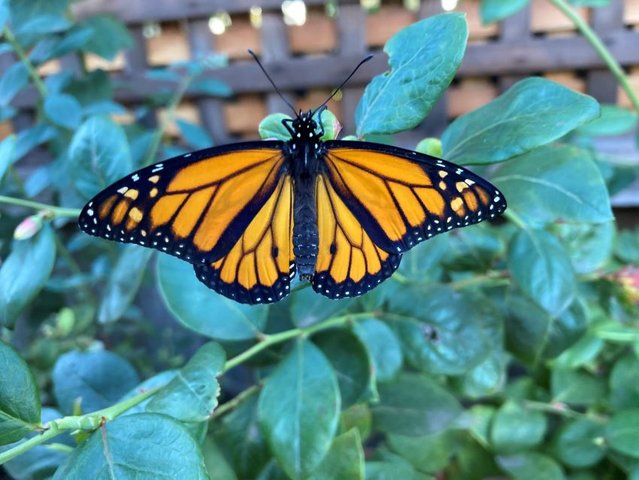Butterflies in Education
Teaching the Butterfly Life Cycle in Schools
How can schools effectively educate students about the transformation from caterpillars to butterflies?
Monarch butterflies are widely recognized in California, yet their population has shown significant fluctuations in recent years. To rear them for educational purposes, a scientific collecting permit from CDFW is now a requisite.
Fortunately, there are alternative methods for teaching metamorphosis. Instead of captive rearing, CDFW strongly recommends educators to establish habitats that support butterflies, bees, and birds. This approach offers a more natural setting for children to observe the complete butterfly life cycle without the need for a permit.
When developing a habitat, it is crucial to incorporate suitable host plants such as native milkweed for monarch butterflies, pipevine for pipevine swallowtail butterflies, or fennel for anise swallowtail butterflies. Additionally, ensuring an abundance of nectar-providing plants is essential. CDFW advises the use of native plants as they are more beneficial for pollinators compared to ornamental varieties. Lastly, the avoidance of pesticides is highly encouraged.
Advanced Hunting Clinics
Elevating Hunter Education Beyond the Basics
Is there a way to advance hunting skills beyond the basic certification level offered by CDFW?
The Advanced Hunter Education (AHE) program by CDFW provides both in-person clinics and virtual webinars tailored to enhance hunters’ proficiency. With the recent relaxation of COVID-19 restrictions, CDFW has expanded the availability of clinics, covering topics such as firearm selection, tracking, conservation, and safety protocols. The aim is to increase the frequency of in-person clinics across California.
These clinics, conducted monthly throughout the state, focus on advanced hunting techniques rather than basic principles of ethical and safe hunting practices.
Despite the term “advanced,” these clinics are suitable for hunters of all levels. Captain Shawn Olague, the CDFW Hunter Education Administrator, emphasizes that the program aims to equip participants with the knowledge and confidence to pursue their hunting interests effectively. The clinics cover a wide range of topics, including wild pig, turkey, and waterfowl hunting, as well as wilderness survival skills and hunting with air guns.
For those unable to attend in person, past webinars are accessible on the CDFW YouTube channel and the Advanced Hunting Clinics website.
Salmon Making a Wrong Turn
Challenges Faced by Salmon During Migration
Why do salmon sometimes mistakenly navigate to the wrong river or stream during their spawning journey?
In a peculiar incident last November in North Stockton, salmon were discovered in a creek far from their intended spawning grounds in the Mokelumne River. This anomaly occurs when salmon, particularly those raised in hatcheries, lose their way back to their native river due to various factors.
One reason for this navigational error is the diminished olfactory senses of hatchery-raised fish, impacting their ability to locate their birth river accurately. Additionally, the intricate network of rivers in northern California, coupled with the mixing of waters in the Sacramento-San Joaquin Delta, can disorient returning salmon.
Jason Julienne, a senior environmental scientist at CDFW, highlights the instinct of fish to follow water flow, which can lead to confusion in regions with intersecting river flows like the Delta. Human interventions such as fish transportation downstream and water management activities further contribute to fish straying off course.
To trace the origin of hatchery-raised fish, CDFW employs coded wire tags implanted during their early development. These tags contain vital information about the fish’s age, release location, and the hatchery of origin.
If you have inquiries for the California Outdoors Q and A column, kindly send them to CalOutdoors@ wildlife.ca.gov.
